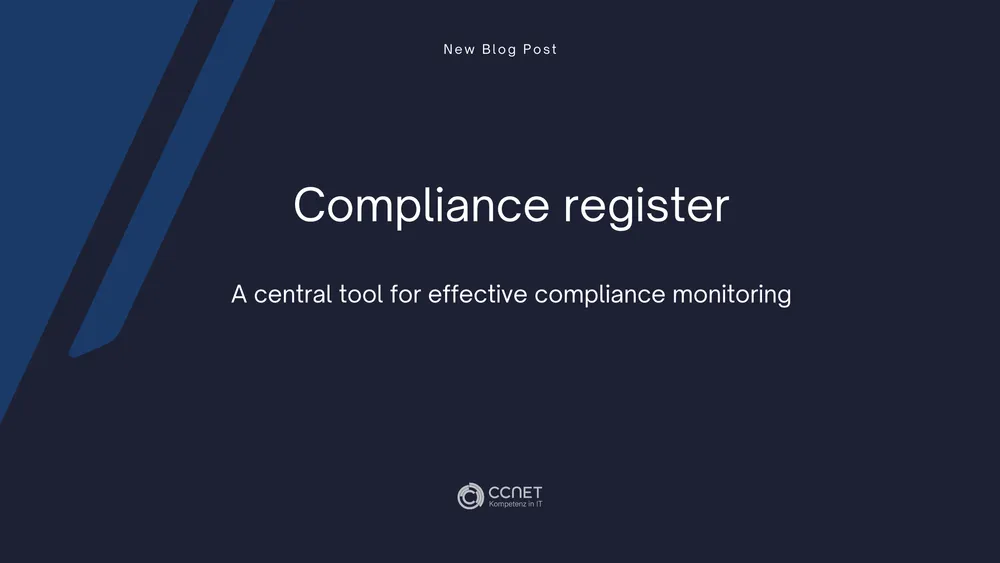
CCNet
Dec 20, 2024 • 2 min read

NIS2-Compliant RACI Model: Clear Assignment of Cybersecurity Tasks for More Efficiency and Security
The NIS2 Directive has significantly increased the requirements for cybersecurity measures in companies. To meet these requirements, it is essential to define clear responsibilities within the organization. One method that has proven effective in this regard is the RACI Model. It helps assign cybersecurity tasks precisely and ensures that all involved know their roles and work efficiently together.
Further information can be found here: IT-Consultation
The RACI model stands for four fundamental roles:
- R (Responsible): The person or team that actually carries out the task.
- A (Accountable): The entity ultimately responsible for ensuring the task is completed correctly and fully.
- C (Consulted): Experts or executives consulted in decision-making.
- I (Informed): People who need to be informed about the progress or outcome.
Why the RACI Model is Crucial for Cybersecurity
In the complex world of cybersecurity, clear responsibilities are critical. Without a structured system like the RACI Model, confusion can quickly arise about who is responsible for which tasks. This can lead to delays, inefficient processes, and, in the worst case, security gaps. The RACI Model brings clarity and structure to the assignment of tasks and helps prevent misunderstandings. Everyone in the company knows exactly what role they play in specific security processes.
How to Apply the RACI Model to Cybersecurity Tasks
The RACI Model can be applied to a wide range of cybersecurity processes. Below are some key tasks relevant to the NIS2 Directive and how they can be divided using the RACI Model:
-
Cybersecurity Strategy Development
- A (Accountable): The IT Security Officer is ultimately responsible for developing the security strategy.
- R (Responsible): The IT team implements the strategy and integrates it into the technical infrastructure.
- C (Consulted): Management and external security advisors are consulted to ensure the strategy aligns with the company’s goals.
- I (Informed): Management is informed of progress and changes.
-
Risk Assessment and Management
- A: The IT Security Officer is responsible for conducting the risk assessment.
- R: External security consultants assist in analyzing and assessing risks.
- C: The IT team provides technical data and is consulted, while management influences strategic decisions.
- I: Management is informed of the results.
-
Technical Safeguards (Firewalls, IDS/IPS, SIEM)
- A: Management is responsible for approving the technical safeguards.
- R: The IT team is responsible for implementing the safeguards.
- C: The IT Security Officer and external consultants are consulted for advice.
- I: Relevant departments are informed about the protection status.
-
Patch Management
- A: The IT Security Officer is responsible for overseeing patch management.
- R: The IT team handles the daily tasks of patch management.
- C: External consultants advise to ensure all systems are up to date.
- I: Management is informed about the status of system updates.
The Benefits of the RACI Model in Cybersecurity
The RACI Model offers numerous benefits for a company’s cybersecurity:
-
Clear Responsibility Areas: By precisely assigning tasks to specific individuals or teams, it ensures that every task has a responsible and accountable party. This prevents misunderstandings and streamlines the process.
-
Efficient Decision-Making: By involving consulted experts, informed decisions can be made without slowing down the process with too many opinions.
-
Effective Communication: All relevant parties are informed without unnecessary information being distributed. This keeps the flow of information clear and structured.
Conclusion: Transparency and Structure in Your Cybersecurity Strategy
The RACI Model helps you define clear responsibilities in your cybersecurity strategy, ensuring that tasks are completed with efficiency and in a coordinated manner. Use this method to optimize your processes, assign responsibilities clearly, and improve collaboration between internal and external actors. This not only ensures the protection of your IT systems but also guarantees a NIS2-compliant approach to meeting all requirements.


